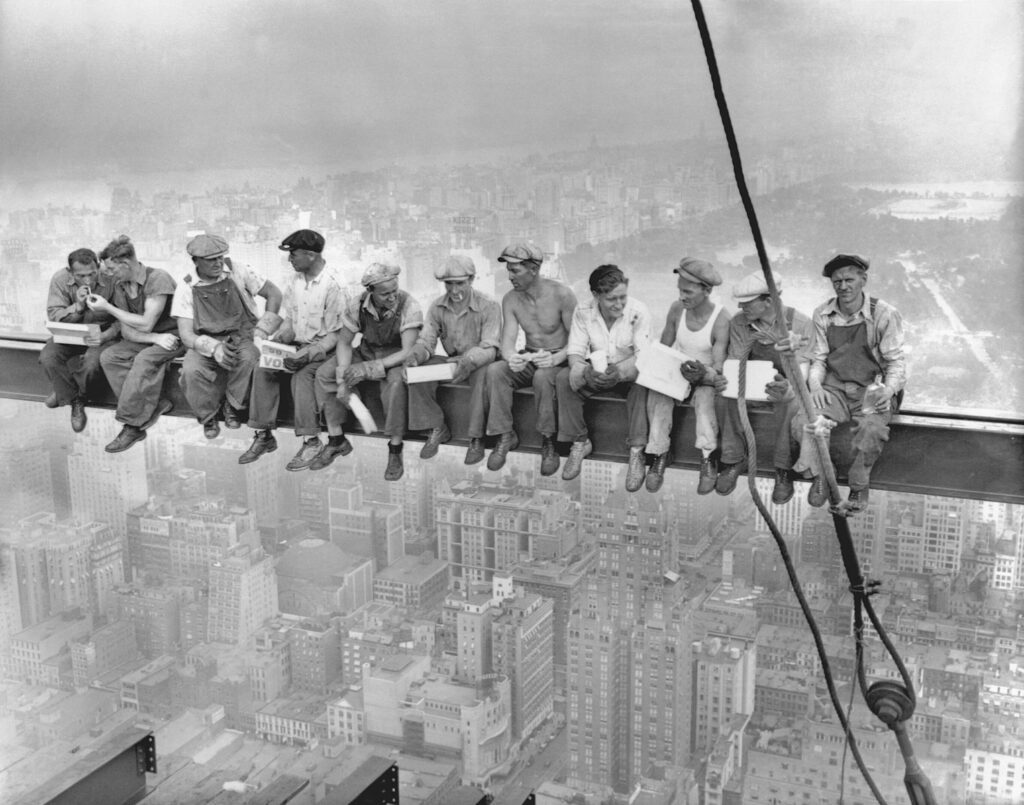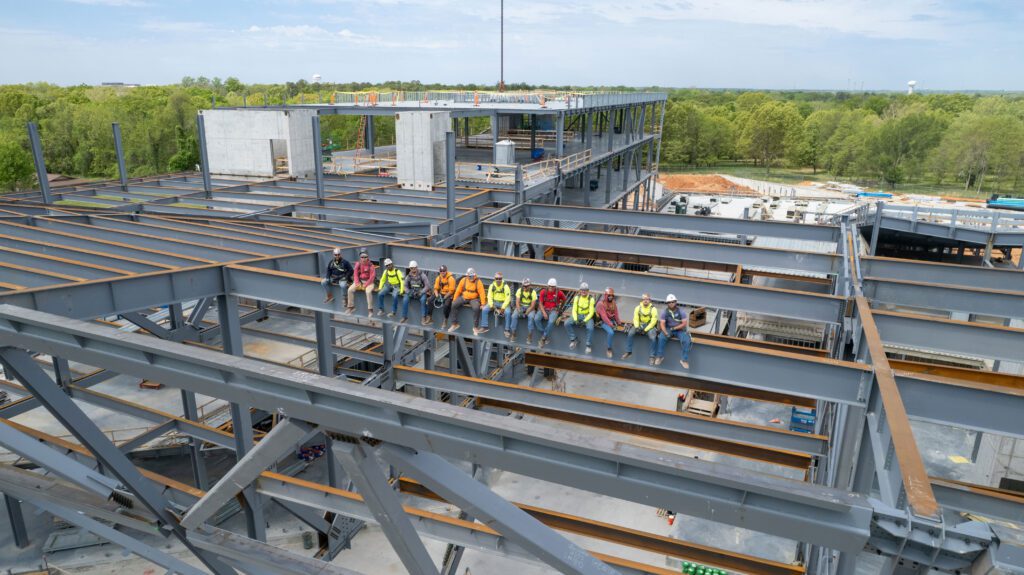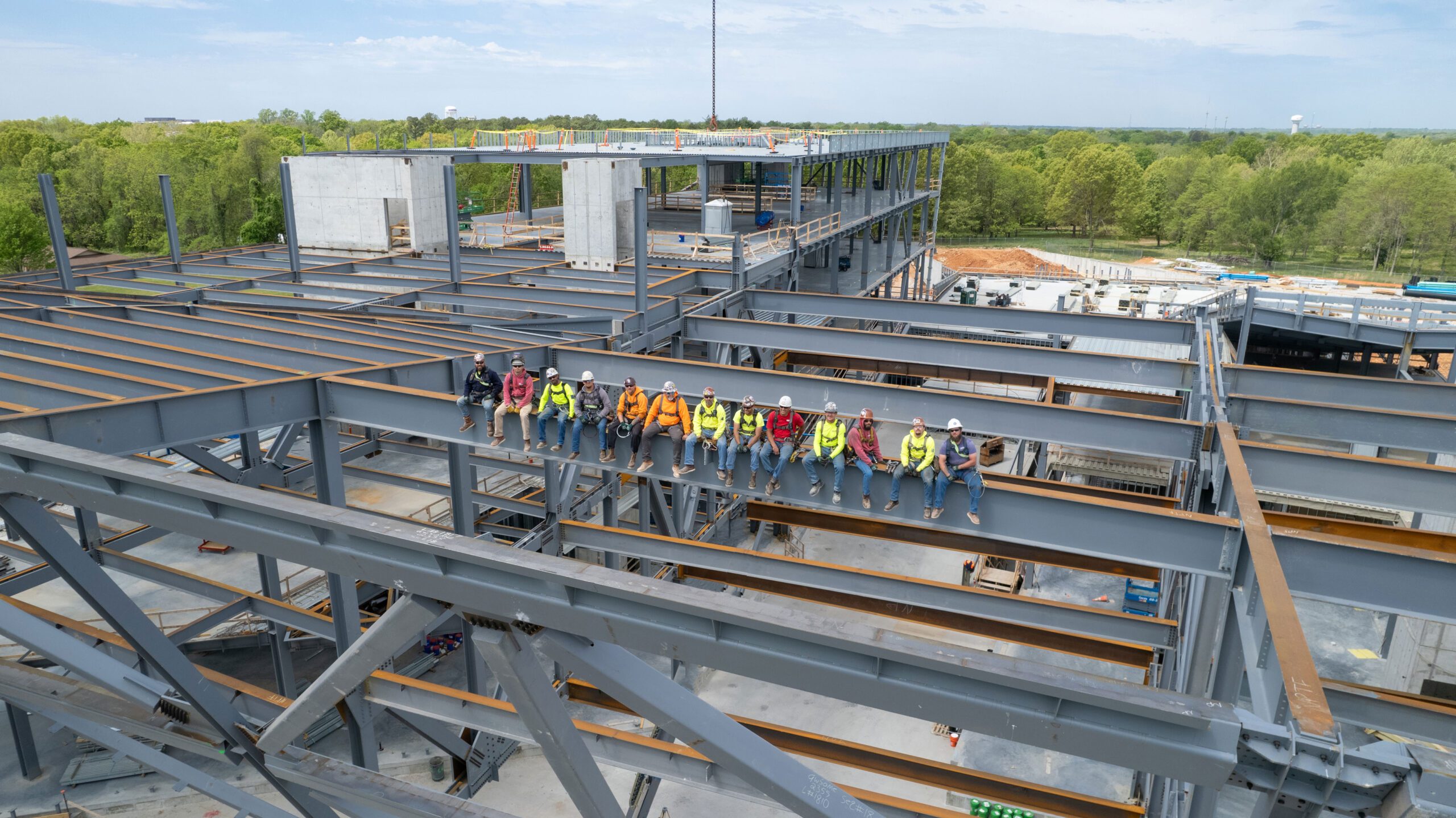We’ve made incredible strides in construction safety over the decades.

From the iconic photo ‘Lunch atop a Skyscraper’ to today’s rigorously safe Crossland construction sites, the journey of construction safety has been monumental. At Crossland, we’re not just building structures; we’re raising the bar for safety standards, ensuring every worker returns home safely every day.

Thanks to the introduction of OSHA standards in the early 1970s, safety in construction has undergone a revolutionary transformation. Fall protection is now a fundamental part of daily operations. Harnesses, safety nets, and guardrails are standard issue, coupled with mandatory safety training sessions to ensure every worker is equipped not just with tools but with knowledge. At Crossland, our steelworkers not only set the bar high—they ensure it’s also securely fastened.
A Focus On Fall Protection
Fall protection is a critical safety topic in the construction industry, where the risk of falls from heights is a constant concern. In the United States, falls are the leading cause of fatalities in construction, making stringent fall protection measures essential to safeguard workers. OSHA mandates comprehensive fall protection plans for any work conducted over six feet in the air.
It’s crucial that every person who works for us or steps foot on our jobsites, from employees to subcontractors, understands that safety protocols aren’t just a guideline—they’re a mandate.

Our safety team is constantly identifying or observing areas where fall protection can fall short. Remember to:
- Ensure all Safety Systems are Functional
- Wear a Safety Harness and Tie Off
- Maintain Solid Footing Throughout
- Do Not Jump or Climb Carelessly
- Observe Surroundings
- Maintain Communication with Others
- Secure Loose Objects or Clothing
Fall protection systems are designed to prevent falls or to arrest falls safely should they occur. These systems include personal fall arrest systems (PFAS), which consist of a full-body harness, a connection such as a lanyard or a lifeline, and an anchorage point strong enough to support the weight and force of a falling worker.
Guardrail systems are another preventive measure, creating a physical barrier to prevent workers from reaching fall hazards. Safety nets can be employed to catch workers if they fall, providing a backup in areas where personal fall arrest systems are impractical.
Training is another pillar of effective fall protection. Workers must be educated on the proper use of fall protection equipment, the identification of fall hazards, and the development and implementation of fall protection plans. Proper safety training ensures that workers are not only equipped but also knowledgeable and vigilant about their own and their peers’ safety.
A Culture of Safety and Reward
At Crossland, we believe in not only enforcing safety but rewarding those who uphold our highest standards. Employees are encouraged to identify and STOP potentially life-threatening situations. By doing so, they are rewarded for their proactive efforts in safeguarding their colleagues and themselves.
Our commitment to safety is uncompromising. We have a Drive to Zero initiative to have zero accidents on our jobsites. Let’s work together to ensure that safety is not just a priority but a habit.
Latest News


